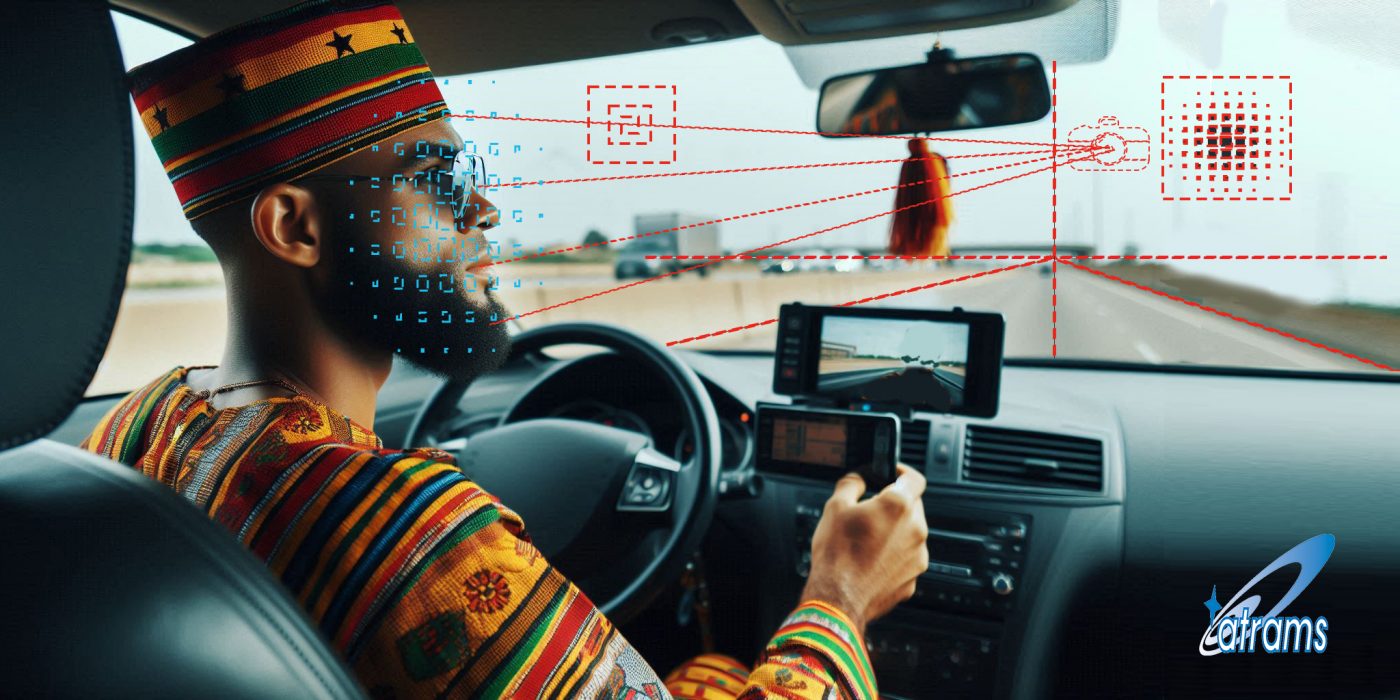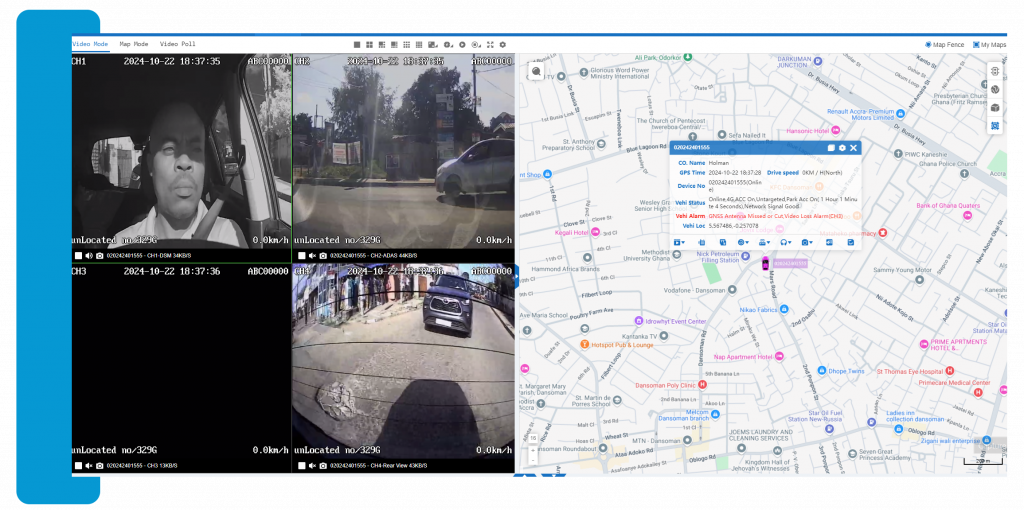
Video Telematics
ATRAMS Video telematics is revolutionizing fleet management and driver safety for businesses across commercial and non-profit sectors. This technology integrates video surveillance with telematics data, offering real-time insights into vehicle performance, driver behavior, and road conditions. By combining cameras with GPS and data analytics, ATRAMS video telematics solutions, such as Advanced Driver Assistance Systems (ADAS) and Driver State Monitoring (DSM), provide critical tools that help save lives, reduce accidents, and optimize operational efficiency.
This involves using cameras or video recording devices installed inside or outside the vehicles to monitor and record driving behavior, road conditions, and other events related to vehicle operations.
This comprehensive approach enhances the monitoring and management of commercial vehicle operations. It boosts safety, improves driver behavior, and increases operational efficiency, while also offering valuable insights for fleet management and risk mitigation.
Video telematics is a game-changer for the transportation industry. By providing real-time data and visual evidence, it not only helps in identifying and correcting unsafe driving practices but also aids in exonerating drivers in case of false claims. The ability to review footage can lead to more informed decisions, better training programs, and a proactive approach to maintenance and risk management. Additionally, the insights gained from video telematics can drive continuous improvement in fleet operations, ultimately leading to cost savings and enhanced customer satisfaction.

Benefits of Video Telematics
Enhanced Driver Safety
Video telematics identifies potentially dangerous driving behaviors, including harsh braking, rapid acceleration, and distracted driving. Through ADAS, drivers receive instant alerts about lane departures or close-following risks, giving them the chance to adjust and avoid potential collisions. DSM further promotes driver alertness by monitoring signs of fatigue or distraction, helping drivers stay attentive. For example, a driver who appears drowsy or inattentive can be notified instantly, reducing accident risks and keeping roadways safer.
Cost Savings on Insurance and Liability
With video evidence and real-time monitoring, video telematics helps protect organizations from liability in the event of incidents. Insurance providers often offer discounts for fleets using telematics, as the technology significantly reduces accident frequency and mitigates claims. Non-profits and commercial businesses alike can cut insurance costs while also ensuring compliance with safety standards.
Increased Operational Efficiency
Video telematics systems help managers track and improve route efficiency, reducing fuel costs and ensuring timely deliveries. ADAS technology, which tracks driver routes and behaviors, enables businesses to optimize driver performance and minimize fuel consumption. For example, a logistics company can leverage telematics data to streamline delivery routes, reduce idle times, and improve resource allocation.
Real-Time Incident Response
In emergencies, video telematics provides fleet managers with the exact location and context of incidents, allowing rapid response. The GPS-enabled systems offer real-time data on driver location and surroundings, ensuring prompt assistance. This is particularly valuable for service-focused organizations, as it supports mission-critical response times, whether it’s for a commercial repair service or a non-profit disaster relief team.
Data-Driven Decision Making
Video telematics provides organizations with rich data that supports operational improvements. For instance, recorded video data from incidents can be used to train drivers, improve safety protocols, and reduce future risks. By analyzing trends and behaviors, fleet managers can make informed decisions that impact overall productivity and cost-effectiveness.
Advanced Driver Assistance System (ADAS)
The ATRAMS ADAS system enhances driver awareness with alerts on lane departures, speed, and following distance, all while recording visual data. If a fleet vehicle veers out of its lane, ADAS sends an instant alert, allowing the driver to correct their course, potentially preventing an accident.
Driver State Monitoring (DSM) System
ATRAMS DSM systems monitor driver attention and fatigue by tracking head and eye movements. A DSM alert for distracted driving ensures the driver remains focused, while telematics data provides the fleet manager with a complete view of each driver’s safety performance.
Video telematics is an invaluable tool that offers benefits across safety, efficiency, and cost savings. By integrating ATRAMS’ ADAS and DSM systems, organizations gain a comprehensive solution that not only protects drivers and assets but also drives meaningful cost reductions, supports compliance, and fosters a culture of safety and responsibility. Whether for a commercial fleet or a non-profit organization, the advantages of video telematics make it an essential component in modern fleet management.

Trailer & Container Monitoring
ATRAMS trailer and container monitoring solutions brings you closer to your assets, providing you the necessary data and information to drive your operations and generate the needed revenue that you are looking for. ATRAMS trailer and container monitoring technology solutions and products and applications provide cost-effective, near-real-time monitoring of valuable fixed and mobile assets.

Remote Fuel Monitoring
ATRAMS vehicle tracking technology helps ensure vehicle security and keep fleet managers informed of the operational status and location of carriers, as well as valuable cargos, containers, and hazardous materials. They also provide invaluable, low-cost data communications links for driver monitoring and virtually any other fleet management requirement.

Manage Fleet & Drivers Remotely
ATRAMS vehicle tracking technology helps ensure vehicle security and keep fleet managers informed of the operational status and location of carriers, as well as valuable cargos, containers, and hazardous materials. They also provide invaluable, low-cost data communications links for driver monitoring and virtually any other fleet management requirement.
